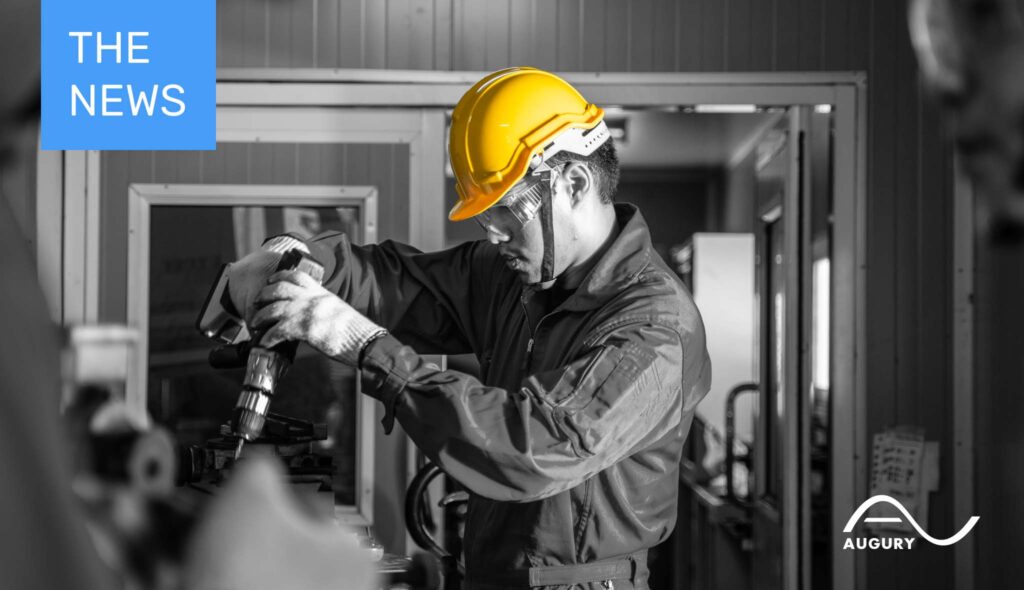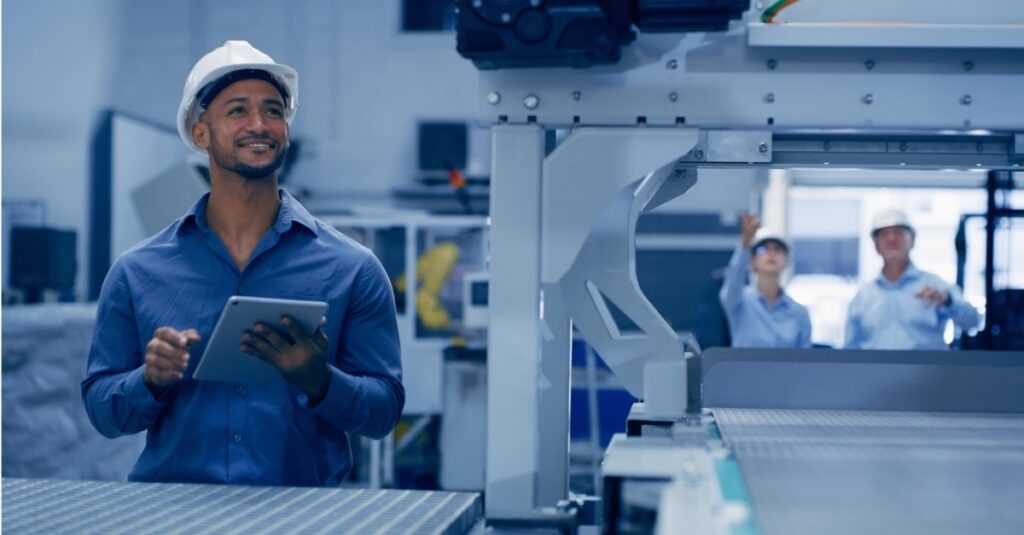
To celebrate World Manufacturing Day 2021 on 1 October, Augury reached out to market research analyst Dan Miklovic to give a state-of-the-industry review. While many people use the word innovation loosely, Dan has been a cheerleader for transformation in manufacturing for over half a century. So, what do we need to focus on in-the-now to build a more resilient and future-proof industry?
“It’s true, my birthday is the first of October: World Manufacturing Day. I wish I could say it wasn’t a coincidence but it is,” chuckles Dan Miklovic.
As Dan looks back at 50 years of vast and varied experience, both hands-on and as an analyst, he maintains a passion for the industry. He has certainly seen it all: from the birth of automation, to maintaining nuclear weapons while in the military (“those weapons really have their own unique maintenance challenges because you can’t really test drive them”), to the drive to digitization, to the volatility of the last 18 months…
As the founder of Lean Manufacturing Research, a VP at Gartner, a TV co-host for World Business Review, or as member of Augury’s Advisory Board, he consistently pushes for the deployment of technology to drive the maintenance and operational excellence of production assets. As Dan often says: “We can’t neglect this. We need to get this right.”
How do you describe your job as a market research analyst to your grandchildren or a clueless journalist?
Basically, my job is to provide a rational sanity check on how players in the industrial and manufacturing sectors can use technology to improve their business. I’m not a consultant – I don’t come in and dive deep or whatever. Rather I serve as a sounding board for questions like “Hey, does this make sense?” or “Should I be considering this?” or “Is there something I am missing here?” It’s more an insurance policy for knowledge around applying technology to solve business problems.
It’s more about questioning if you are drinking too much of your own Kool-Aid.
I serve a similar sanity-checking role for suppliers in those sectors. But then it’s more about questioning if you are drinking too much of your own Kool-Aid. Are you putting out marketing messages that are way overhyped? Or won’t play well with the audience? Or don’t match what the market is looking for right now? So again, I’m not there to say ‘do this’ or ‘don’t do that’. I’m more there to stop you from making really stupid mistakes.
And what do you see as the single stupidest mistake the industry is generally making as a whole?
I’m really disappointed in how the manufacturing sector has not caught up with the consumer sector in the way it applies technology – and that’s one of the reasons why I think Augury is different. Ten years ago, if you wanted to automate your house, you had to be an electrical engineer or a real technical geek – you had to do it all yourself from scratch. Today, I can buy a smart-everything and it’s all plug-and-play and I have multiple choices from Amazon, Google, Apple or whoever. Just the other day I just put a simple system in my garage: Amazon can now open it, put in a package and close it. Simple.
Meanwhile, manufacturers need to hire in a whole army of specialists to use technology that’s already proven to work! It boggles my mind that if a manufacturer wants to get an AI system, they need data scientists to program it, electronic technicians to wire it all up, reliability engineers to figure out what all the data scientists should be looking for, and then someone with at least an associate’s degree to maintain it! Meanwhile I don’t need any kind of university degree to download Maps to my phone…
So let me summarize the situation: THIS! IS! INSANE!
Is this lack of plug-and-play smart tech for manufacturing the reason why the industry is failing us now?
Yes, that’s a big part. And Covid just highlighted how disastrous this whole approach of relying too much on people being hands-on, instead of applying smart technology to help. And certainly, with the labor shortage, we simply can’t continue down this path.
What surprised you most in the last 50 years? What did you not see coming?
How recently the steady state model broke so quickly and the industry became so volatile. Traditional automated manufacturing has always been a very steady state business that always operated around the idea: if it ain’t broke, don’t fix it. And you know the whole Pareto principle 80% of your problems come from 20% of your issues. In other words, once you get something moving in a steady state, it tends to run really well. And it’s easy to keep optimum production. It’s only when you start and stop things, whether it’s planned or unplanned, you end up with issues around quality, volume, costs, energy consumption and everything.
And so now the skill you need is agility, which is really different. And it’s not something manufacturers in general have been very good at…
And what I didn’t really expect to see was the volatility that we’ve seen in the last two or three years. I mean, it’s the combination of COVID and the rapid rise of China as a leader on the technology side – an area that has always been more Western-based. And now the switch has been flipped from something where steady state was desirable, to having to deal with rapid fluctuation.
In the past, the key to success was always your ability to keep things running smoothly. Even today, it’s a nice idea but an unreal expectation. So now the skill you need is agility, which is really different. And it’s not something manufacturers in general have been very good at…
Okay we see this volatility with the shortage in semiconductors – and all those acres of unsold parked cars waiting for their chips. But can you give another example of this shift to where agility matters?
Look at cybersecurity. In the beginning, the easy way to achieve cybersecurity was just to keep things isolated. But then we realized we can’t get the information. So, we started integrating everything. And everyone assumed no one would attack these systems because they are so unique and esoteric. Wrong! Ransomware entered the picture and people should have been prepared but they weren’t. Now instead of threatening to blow up a factory, you can just shut it down and hold it hostage until you get paid: it’s so much easier. So, it’s that rapid shift that people didn’t expect and weren’t prepared for.
To be agile, you need to prepare yourself by answering some basic ‘What if?’ questions… What if people get into our computer systems? What should we do if there’s a shortage of chips?
What would you like to see happen over the next year, as people consolidate on their COVID learnings and adaptations?
Well, they have to recognize that they need to partner with their vendors, and they need to build an ecosystem of vendors, not just a biosphere of vendors. Traditionally, people have gone out and settled on two or three big vendors, and they try to do everything through them. This is what I call a biosphere – it’s small, contained and does not reflect reality.
Look at how that Biosphere 2 experiment in Arizona failed: a few little things changed externally and everything went wrong internally. You need to create a true ecosystem: like how Amazon has Echo and all these things that can plug into Alexa and how these can all coexist with the stuff from Apple or Google. People need to think about creating an environment where they can bring things into their ecosystem and take them out easily. We need to learn to live in a more changeable environment – to recognize that changes are inevitable.
Now, the second thing is how manufacturers should hold the vendor community more accountable in the sense of security and cybersecurity. Yes, some of the systems are secure and it’s people’s own stupidity, like plugging in USB drives, that causes things to go wrong. But in general, the vendor needs to understand that people are not stupid, they just do stupid things – like sleep at the wheel of their self-driving cars even when a big sign says they shouldn’t. So, you need technology to detect if the driver is actually paying attention otherwise you shut down the system. And industrial technology needs to do the same. If you’re going to rely on people to be part of the equation, you have to make sure that those people are engaged with the system. And that needs to be the vendor’s obligation.
And how about over the next 5 or 10 years? What do you see happening that will help make manufacturing more future-proof?
Additive manufacturing – or 3D printing if you want to call it that – is going to change a lot of things as we embrace increased flexibility. The last 18 months has proven that the economy of scale doesn’t always work. Flexibility and diversity are the ways to go and additive manufacturing fits with that. And it won’t only change the way we manufacture, but also the way we maintain and operate our manufacturing facilities. Why order a gasket for $100 off the OEM to keep as a spare part, when you can print it for a couple of bucks when you actually need it?
The last 18 months has proven that the economy of scale doesn’t always work. Flexibility and diversity are the ways to go
And again: we are going to have to move to smart systems – and not only for increased reliability. We are simply not graduating enough data scientists and engineers to fill the demand if we follow the old model. We need the smart techie people to work to create the systems for the Googles, the Microsofts and the Augurys, and not for the actual manufacturing companies.
What ultimate message would you like to part with?
I think the message on the whole is how manufacturing is vital and essential to the way we live today. So, we just got to figure out how to do it efficiently, sustainably and with low energy. We’ve got to get to work and get it right.
Thanks, and Happy Manufacturing Day, Dan!
Want to learn more? Just reach out and contact us!




